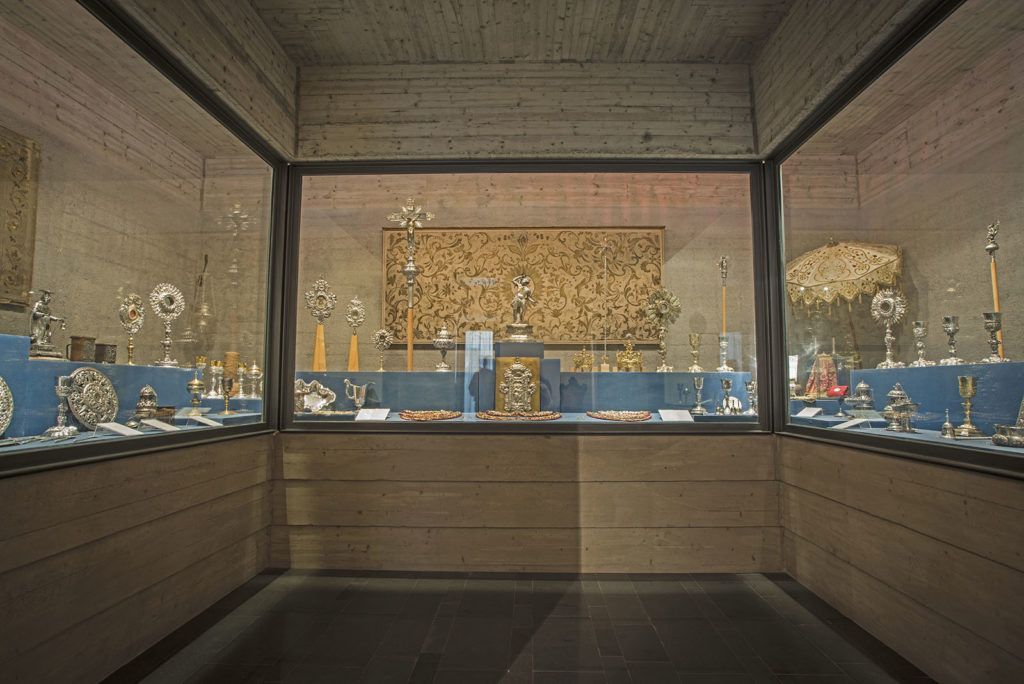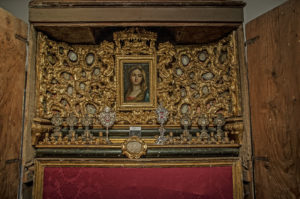The worship of the Madonna della Stella is deeply celebrated by the population in Militello. Worship sky-rocketed in the 18th century and the rich lords of Militello, among others, began to commission votive works for the Madonna. In fact, the parish church of the Madonna della Stella is home to the stanza degli argenti (room of silverware).

 It is a place where sacred vases, chalices, pyxes and monstrances belonging to the parish of Santa Maria and the rectoral churches of San Giovanni and San Sebastiano are kept and arranged.
It is a place where sacred vases, chalices, pyxes and monstrances belonging to the parish of Santa Maria and the rectoral churches of San Giovanni and San Sebastiano are kept and arranged.
It also contains the gold crowns and the star of the simulacrum of the Madonna della Stella, alongside three silver keys needed for the unveiling.
On the day of the feast, the keys are used to open the doors of the niche that houses the simulacrum and are intended for the parish priest, the mayor and the marshal of the Carabinieri.
Another room holds a precious “portable altar”, an object that resembles a wooden wardrobe but inside it houses an altar with simulacra and reliquaries.
This particular object was used as a private chapel in the houses of the nobility.
Finally, the many works of art include the colourful Madonna by
Giandomenico Gagini
.